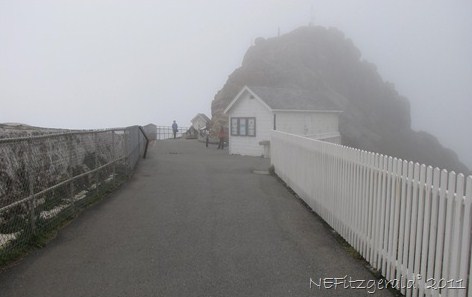Turbid Conglomerates And The Point Reyes Lighthouse
My early–March geology adventure at Point Reyes National Seashore was slowly winding down, ebbing like high tide turning to low. Earlier in the week, I had walked the Earthquake Trail at the Bear Valley Visitor Center, discovered the granites at Point Reyes headlands, unmasked the Salinian Block, and found the Franciscan Mélange at Shell Beach. Next on my travel agenda was a visit to Point Reyes Lighthouse.
By the time I got there the fog was so thick it seemed I could barely see thirty feet in front of me. The 20-mile drive along the peninsula had been fairly clear but as I neared the parking lot a coastal cloud crept in to shroud the headlands. No wonder they put a lighthouse here!
There were not many other visitors as I ambled up the path. This paucity of people is one reason I enjoy traveling in the off-season. I like chatting with the odd person here or there, but I am not a fan of crowds.

Point Reyes conglomerate and whale remains near visitor center
The lovely rocks peeking out from behind the whale remains are the Point Reyes conglomerate of Early Tertiary age, around 65–55 million years old. It is the oldest marine sediment found on top of the granite bedrock of Point Reyes. Quartzite and feldspar cobbles are found in a matrix of sandstone and granitic rocks. Marine fossils indicate an origin deep in the ocean.
The similarity of these rocks with some found 100 miles to the south on the Monterey Peninsula suggests that the Point Reyes conglomerate was formed while it was adjacent to Monterey in Early Tertiary time. As the Salinian Block traveled northwest along the western edge of North America, so did Point Reyes and its conglomerate.






